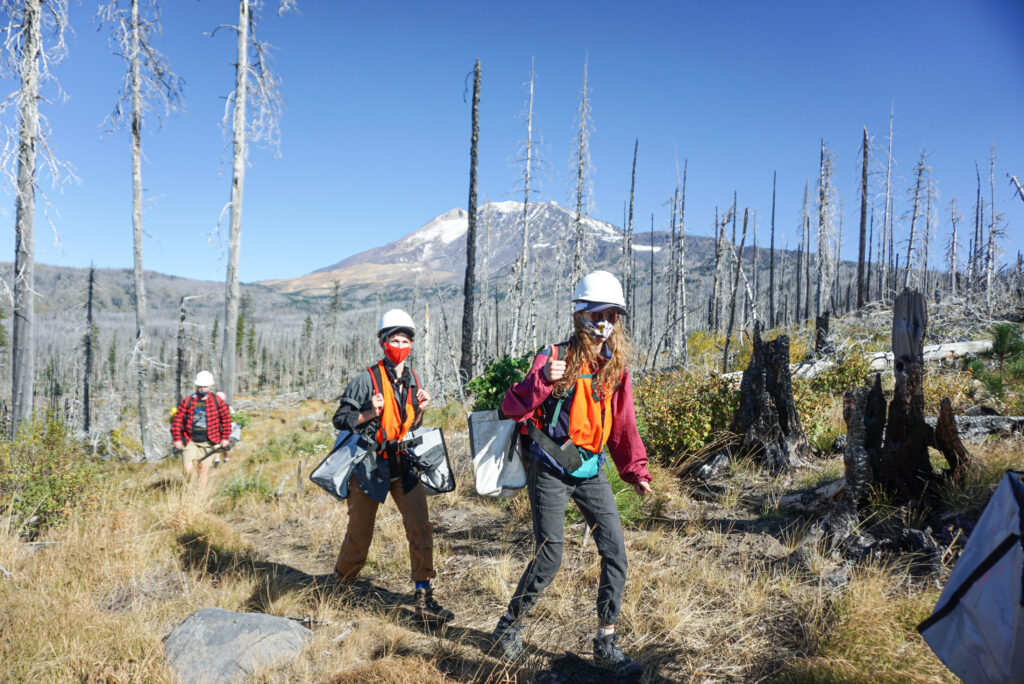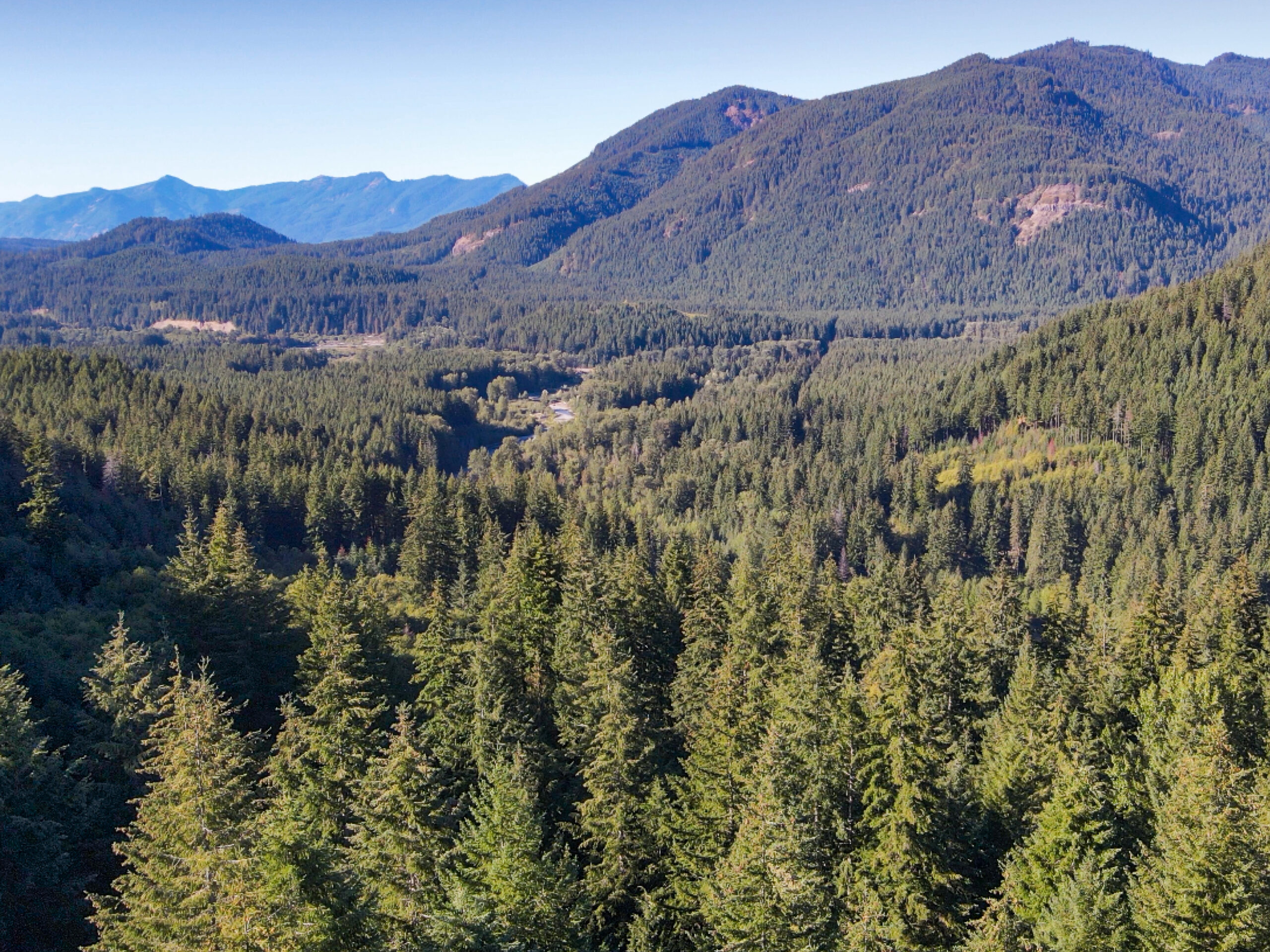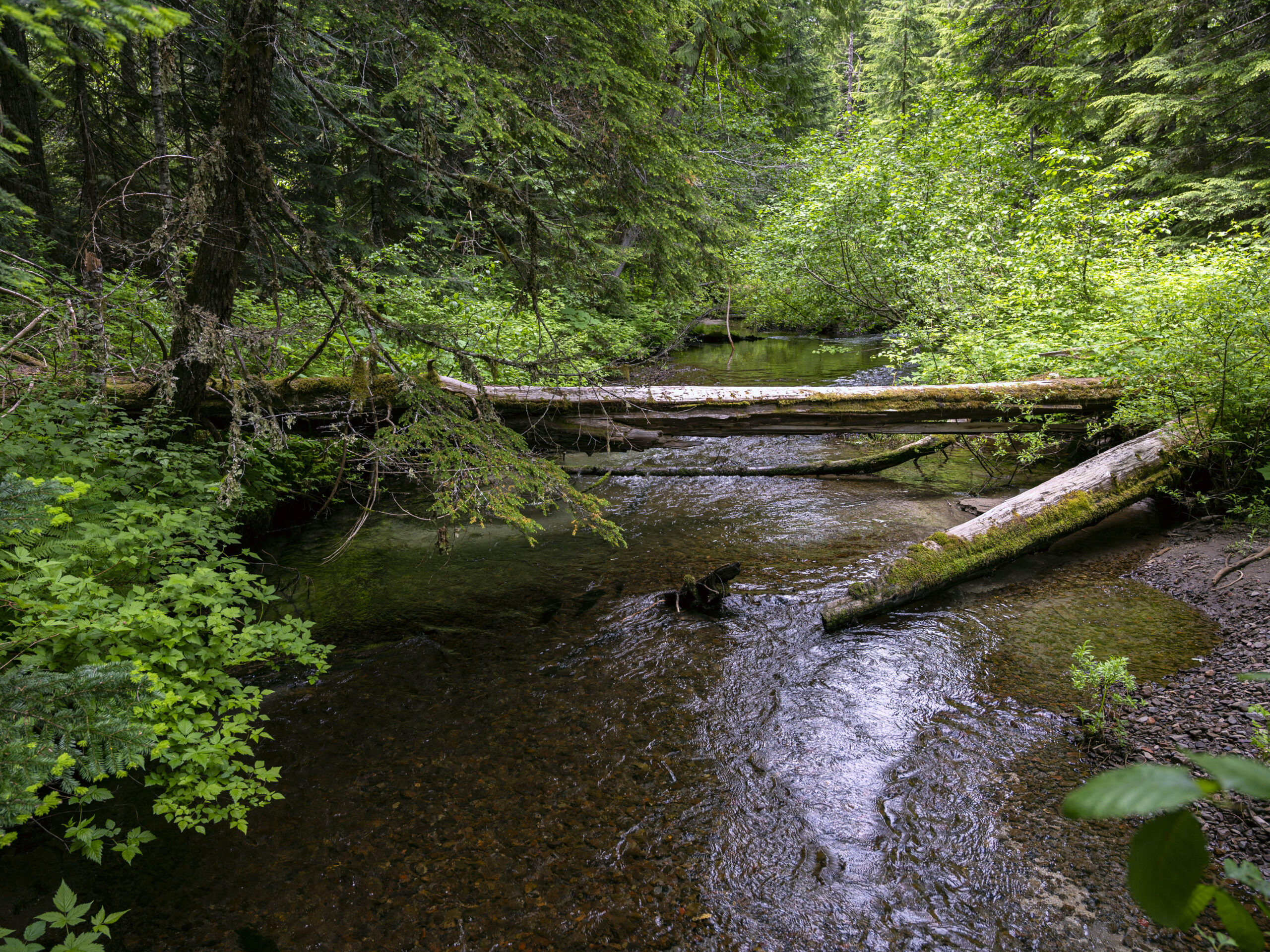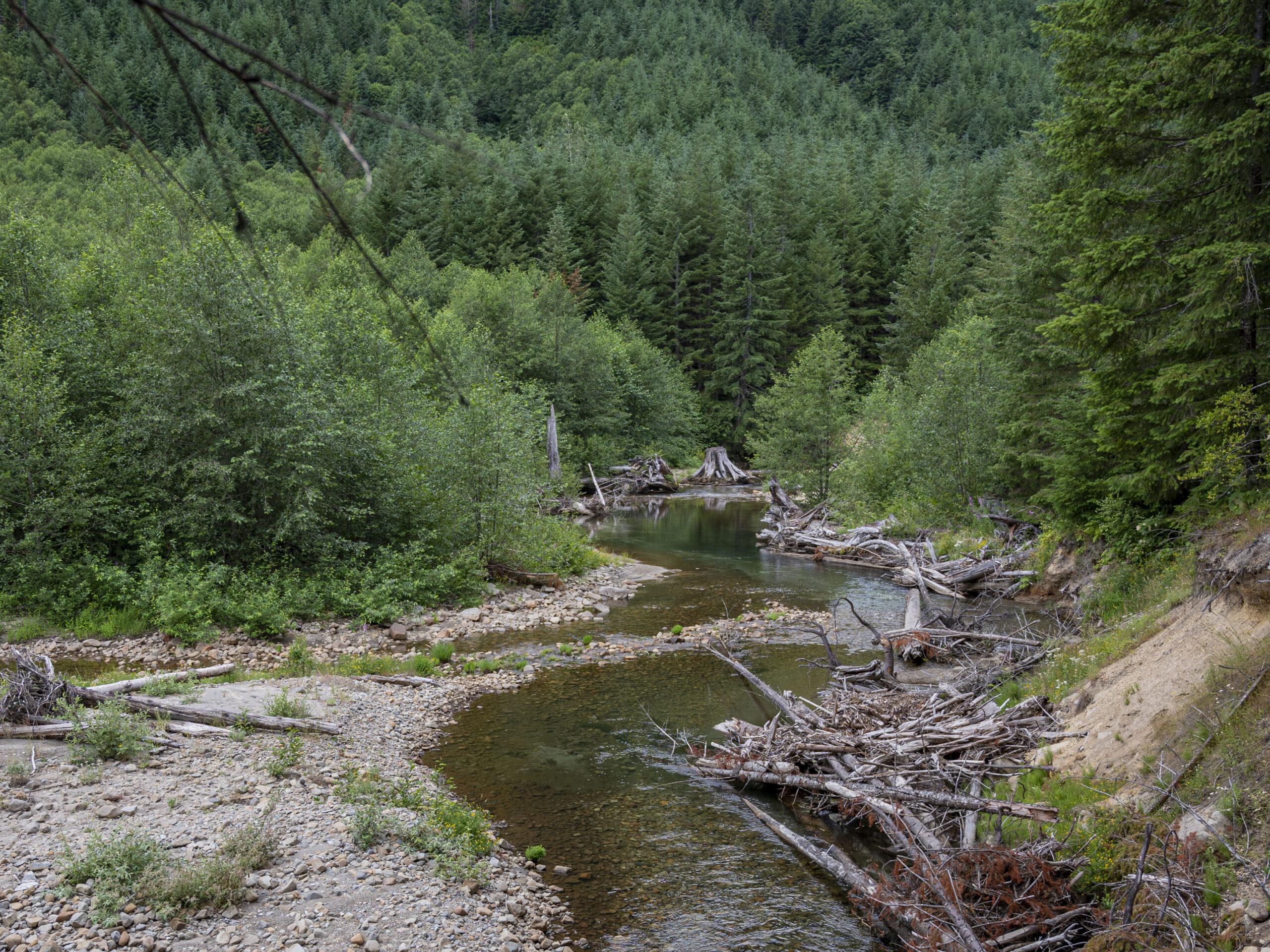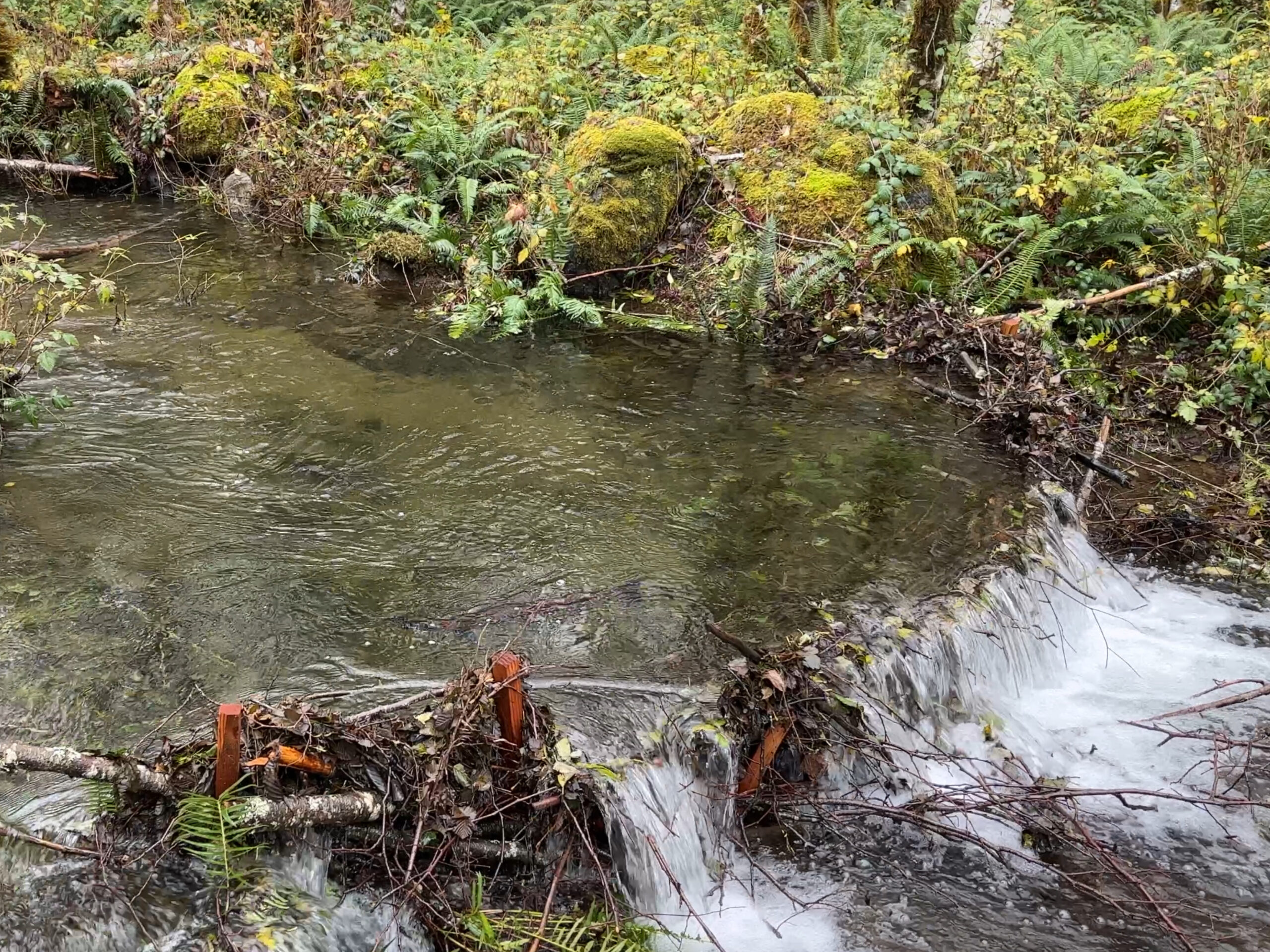[vc_row row_type=”row” use_row_as_full_screen_section=”no” type=”grid” angled_section=”no” text_align=”left” background_image_as_pattern=”without_pattern” css_animation=””][vc_column][vc_column_text]
By Darvel and Darryl Lloyd
[/vc_column_text][vc_empty_space height=”35px”][vc_separator type=”normal” color=”#444444″ thickness=”3″][/vc_column][/vc_row][vc_row row_type=”row” use_row_as_full_screen_section=”no” type=”grid” angled_section=”no” text_align=”left” background_image_as_pattern=”without_pattern” css_animation=””][vc_column width=”1/2″][vc_empty_space height=”35px”][vc_column_text]My twin brother, Darryl, and I have always loved big trees and old forests. We grew up at our family’s Flying L Ranch near Glenwood, Washington, where we hung out at the ranch’s only old-growth ponderosa pine that we named “The Council Tree.” We always loved to explore the lovely old-growth ponderosa pine stands above the Glenwood Valley and fish in the creeks shaded by big cottonwoods, cedars and firs.
So after we sold the ranch in 1997 and settled down a bit in this new millennium, we began taking trips together throughout the west, always seeking out big trees wherever possible. We especially love the remaining old-growth stands in Gifford Pinchot National Forest, getting to know the area quite well after so many years climbing its peaks and driving its back-roads. Throughout our lives we were always awed by the “Trout Lake Big Tree,” just inside the GPNF and one of the state’s largest ponderosa pines until it died last year).
Our passion for hunting giant trees in the GPNF has increased, especially over six years when we’ve made some significant “discoveries” and brought along a steel measuring tape to measure diameters at average breast height (dbh). We’ve held off purchasing an accurate laser height-measuring instrument because of the cost. In some cases, it has taken Internet sleuthing and difficult bushwhacking with map and compass to find some of the giants. Darryl finally bought a GPS device—hooray!
Here are what we believe to be the GPNF’s largest known western redcedar, two Douglas firs, and noble fir by girth and volume, with a caveat: only a tree climber and/or a forest expert (with an accurate height measuring device) would be able to determine these trees’ exact heights and volumes. Of course, there may be larger trees out there, but someone has to find them.[/vc_column_text][vc_empty_space height=”35px”][/vc_column][vc_column width=”1/2″][vc_empty_space height=”35px”][vc_single_image image=”3092″ img_size=”full” add_caption=”yes” alignment=”right” qode_css_animation=””][/vc_column][/vc_row][vc_row row_type=”row” use_row_as_full_screen_section=”no” type=”grid” angled_section=”no” text_align=”left” background_image_as_pattern=”without_pattern” css_animation=””][vc_column width=”1/2″][vc_empty_space height=”35px”][vc_column_text]1. A giant western redcedar (Thuja plicata) 14’ 3” in diameter at breast height (dbh) and maybe 150 feet tall. We dubbed it “Trinie’s Cedar,” after a young lady who helped us discover and measure the brush-surrounded tree. The huge tree is located off FR 25 in the Cedar Flats Research Natural Area in GPNF, on a terrace of the Muddy River. We challenge anyone to find a larger “cedar” in the GPNF![/vc_column_text][/vc_column][vc_column width=”1/2″][vc_empty_space height=”35px”][vc_single_image image=”3095″ img_size=”medium” add_caption=”yes” qode_css_animation=””][/vc_column][/vc_row][vc_row row_type=”row” use_row_as_full_screen_section=”no” type=”grid” angled_section=”no” text_align=”left” background_image_as_pattern=”without_pattern” css_animation=””][vc_column width=”1/2″][vc_empty_space height=”35px”][vc_column_text]2. An equally-giant Douglas fir (Pseudotsuga menziesii) 11 ft.,10” dbh and about 160’ tall to the shattered top, only around 5 miles from of Randle in an unlogged area of the Cowlitz Valley Ranger District. We called it the “Bob Pearson Fir,” a spotted owl expert who discovered the tree and showed it to us. It’s certainly must be one of the largest-diameter Douglas firs still alive in the Cascade Range.[/vc_column_text][/vc_column][vc_column width=”1/2″][vc_empty_space height=”35px”][vc_single_image image=”3097″ img_size=”medium” add_caption=”yes” qode_css_animation=””][/vc_column][/vc_row][vc_row row_type=”row” use_row_as_full_screen_section=”no” type=”grid” angled_section=”no” text_align=”left” background_image_as_pattern=”without_pattern” css_animation=””][vc_column width=”1/2″][vc_empty_space height=”35px”][vc_column_text]3. An immense “stove pipe” of a Douglas fir (Pseudotsuga menziesii), 10’ 3” dbh, maybe 250-275 tall. Its the largest tree in the Quartz Creek Big Trees Preserve and probably the GPNF’s largest tree in volume, located not far off FR 26, just outside of the Mt. St. Helens blast zone and inside Lewis County. Unfortunately, the Forest Service is no longer maintaining the loop trail through this very impressive grove, and FR 26 is vulnerable to washouts from strong winter storms.[/vc_column_text][/vc_column][vc_column width=”1/2″][vc_empty_space height=”35px”][vc_single_image image=”3098″ img_size=”medium” add_caption=”yes” qode_css_animation=””][/vc_column][/vc_row][vc_row row_type=”row” use_row_as_full_screen_section=”no” type=”grid” angled_section=”no” text_align=”left” background_image_as_pattern=”without_pattern” css_animation=””][vc_column width=”1/2″][vc_empty_space height=”35px”][vc_column_text]4. The world’s largest known Noble fir (Abies procera) is located in the Goat Marsh Research Natural Area of the Mount St. Helens NVM, in a magnificent 70-acre stand of very large noble firs and Douglas firs (said to contain the highest wood volume per acre of any research plot in the world outside the California coast redwoods). Discovered by Robert Van Pelt in 2001 and named “The Goat Marsh Giant”, the tree measures 8’3” dbh and approximately 265 ft. tall, with a dead top reducing the height since Van Pelt measured it. It has almost reached the end of its life (age around 300-350 years).[/vc_column_text][vc_empty_space height=”35px”][/vc_column][vc_column width=”1/2″][vc_empty_space height=”35px”][vc_single_image image=”3099″ img_size=”medium” add_caption=”yes” qode_css_animation=””][vc_empty_space height=”35px”][/vc_column][/vc_row][vc_row row_type=”row” use_row_as_full_screen_section=”yes” type=”grid” angled_section=”no” text_align=”left” background_image_as_pattern=”without_pattern” css_animation=”” css=”.vc_custom_1465592094531{background-color: #96d1ae !important;}”][vc_column][vc_row_inner row_type=”row” type=”grid” text_align=”left” css_animation=””][vc_column_inner][vc_empty_space height=”125px”][latest_post_two number_of_columns=”3″ order_by=”date” order=”ASC” display_featured_images=”yes” number_of_posts=”3″][vc_empty_space height=”75px”][/vc_column_inner][/vc_row_inner][/vc_column][/vc_row]



